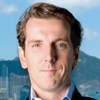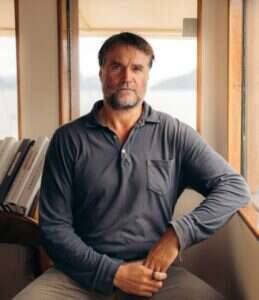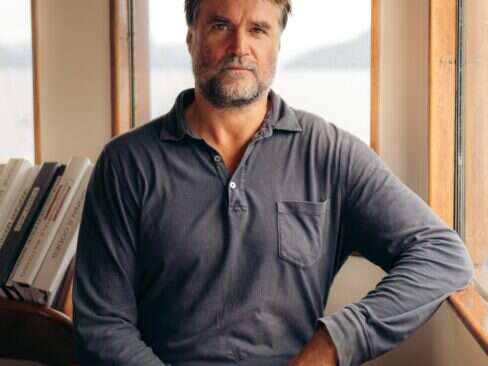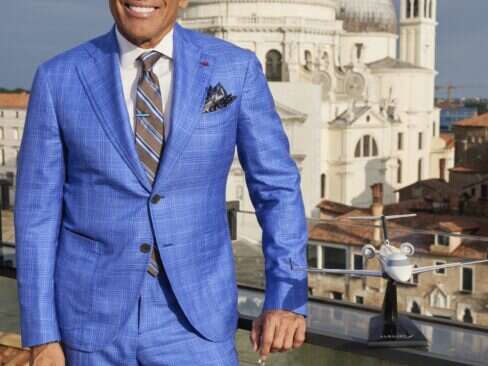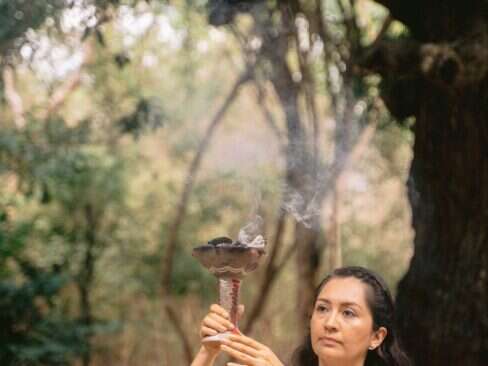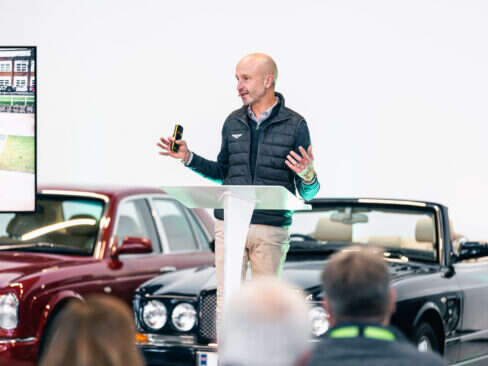
CEOJohn Hardy
When you run 150 miles in a desert as a hobby, global recessions and other such challenges are obstacles to merely be taken in stride. Recently Elite Traveler President and Editor-in-Chief Douglas Gollan visited jeweler John Hardy CEO Damien Dernoncourt at the company’s world headquarters in Hong Kong to find out how he is keeping the company hurtling down a successful track.
ET: So why don’t you start by talking about how you became involved with John Hardy?
Damien Dernoncourt: I’ve been in Asia 15 years. At first I was buying product from over 300 factories in China for a French group that sells homeware, tools and is a supplier for Home Depot. Then I started my own company in packaging logistics. For instance, when you go to Wal-Mart and you have those plastic packages that are hard to open—that’s what I did. After a while I was tired of this, so I sold the company and went back to France and then Singapore and got my MBA.
At the same time, a friend of mine asked if I wanted to join a company he invested in: it was John Hardy. I went to Bali and met John and fell in love. John was very interesting and that was six years ago and we’ve had a lot of success. Three years ago John came to us and said he wanted out so I went to Guy Bedarida, who is our designer, and we went to 3I, which is a private equity firm, and we took the business over two years ago and it’s been very exciting.
In the last five years we quadrupled turnover, so the crisis came at a good time for us. Right now we can stop and breathe, because we are at a plateau instead of fast growth, so we can work on the structure and backbone of the company.
ET: Was replacing John Hardy at John Hardy a tricky task?
Damien Dernoncourt: It was. John Hardy the man was John, his wife, the kids, and so we have gone from John Hardy the man to John Hardy the brand. The key is John Hardy the brand is bigger than the person.
But to answer your question, we started with customer focus groups to better understand the brand, and I visited 77 stores in six weeks. Then I spent five days behind the counter during Thanksgiving to see how the brand was perceived by the customer, and also to understand how the customer interacts with the brand. Behind the counter is what it’s all about.
It’s interesting because you know your best sellers, but behind the counter you find the opportunities. You see people pick up pieces and spend time with them, but put them back, so you can see which pieces that don’t sell have potential and which ones will never sell.
So we removed what was not relevant in the brand for the customer, so we could elevate the brand. The brand John Hardy is about designers and artisans. In Bali, John Hardy the man put these people together, so we have Guy who has designed for Boucheron, Van Cleef and others, and on the other side we have these incredibly talented Balinese artisans. Some people don’t know that in the 900 or so square miles that is Bali, it was once eight kingdoms. When you have eight kings in their kingdoms in such a small area, each of the kings is competing with the others to have the most beautiful house, the most beautiful wife, the most beautiful jewelry so you find artisans like no other in Bali. And in Bali Hinduism means there are a lot of offerings to the Gods, and everyone wants to make offerings that are more unique, special and beautiful than others, so again, there is this incredible natural born genius, talent and an incredible design aesthetic. In Bali everything is handmade from drawing to final piece, so in John Hardy the brand we are simply expressing this history and the beauty.
We also saw an opening in that there are a lot of new designers with beautiful designs, but of poor quality, and then you have the venerable old houses with beautiful work, but the design is a bit stale. So there is a place for the brand John Hardy, where we haven’t changed the brand, we have just focused very clearly on what the attributes of John Hardy the brand are.
ET: Is John Hardy still involved?
Damien Dernoncourt: John and his family spend a lot of time traveling, and he is focused on building a green school in Bali, and green is of course a very important focus in everything we do.
ET: Looking ahead, what are your plans for the future?
Damien Dernoncourt: We want to grow, but for the next 18 months we see an opportunity to really improve our IT, our operations and make the business much more efficient. We have in this period a great opportunity to put in tools to help manage the business.
Even though we sell in 22 countries, really only the United States is big. But we are now open in Paris, and we have Harrods coming in London, and we have been in Russia for two years now. We also will expand product categories, but only where it is part of the brand DNA. We already have some lifestyle products, and homeware and tableware, but both are relevant for John Hardy the brand.
ET: How so?
Damien Dernoncourt: Tableware started because in Bali we have long tables where we feed our workers, and as we grew, the tables grew. And when we had guests, we would feed our guests, and we liked to create this environment where our workers and guests shared a meal at a long table together. So then we created flatware, silver buckets and trays, and salt and pepper shakers because that was all part of these long tables where we liked to host.
Traveling is also a very important part of the John Hardy brand. Our headquarters are here in Hong Kong, but we have our main facilities in Bali, we have an office in Bangkok and our sales headquarters are in New York. So traveling accessories would be relevant but we are not in a hurry.
ET: How about a John Hardy resort?
Damien Dernoncourt: Right before the crisis in Bali we in fact were going to open a small resort in Bali, right by our workshop on the river. With the crisis we have stopped that for now. We want to add extensions that are relevant.
ET: How are you dealing with the crisis?
Damien Dernoncourt: The last five years we had this incredible growth, so we have stepped back and we looked at expenses. We downsized in terms of people to make sure the size of the company fit the business. We did that early on, and we tried to do it in a respectful way to those who left with the understanding that we had a responsibility to those who are still here to make sure the business is successful.
We changed our marketing strategy to focus more online, particularly in social media, such as Facebook and Twitter, and it is interesting because it gives us another chance to interact directly with the customer and it generates an exchange with the customer.
ET: Who is the John Hardy customer?
Damien Dernoncourt: It is predominantly a woman, and she is a self-purchaser. Often she is a mother, working and rewarding herself with John Hardy. We have a lot of fans who really love the brand John Hardy, and when you meet these people, it is an incredible experience because she knows so much about the brand.
ET: How big is John Hardy the company?
Damien Dernoncourt: We have $130 million USD in retail sales and we have about 1,000 people.
ET: So aside from business, I understand you have an interesting hobby?
Damien Dernoncourt: Yes, long distance running—racing across the planet. There is a website www.racingtheplanet.com that you can check out. We run 150 miles in six days in deserts. It is a self-sustaining race in that they just provide water and tents to camp at night. We’ve raced in Chile, China and Nambia. It is very challenging. It is a fantastic washing machine for the mind and body.
ET: Do you learn anything from the races that you can translate back to the business?
Damien Dernoncourt: I learn a lot about myself, and the way I behave. It’s about consistency and pacing myself. You win if you can sustain the distance, not if you are the fastest. It is also something we do for charity, because I really believe in that. I raise money for something Guy and I have started few months ago, the Job for Live Foundation. It is more difficult to be a woman in Asia than Europe or the U.S., so we are taking orphan girls in Bali and creating a two-year apprenticeship for them where they get to work in various areas of the company such as design, production, product development or sales for the first two months and after that they can choose which area they want to train in.
ET: That sounds like a great opportunity. So is there anything else you would like to talk about?
Damien Dernoncourt: Yes, everything is green. Our objective is to be carbon neutral, but not by buying carbon credits on an exchange in Chicago. For any carbon we create, we calculate it and we fund the planting of bamboo and the water systems in Bali to off-set the carbon. This year we will plant 95,000 bamboo plants, and five years later we will buy the bamboo back from the local farmers and we will use it to make buildings and furniture. Everything we do that creates carbon we are off-setting in this way, so if I take a trip, we calculate it, or if we advertise in a magazine, we figure out how much we need to off-set for the page our ad was printed on. We have a jewelry line inspired by bamboo that is part of the John Hardy brand, and for that line 10 percent of the selling price is used to plant bamboo. In the end you look good, you do good and you feel good, so that’s what we are doing here.





